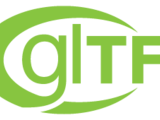GLTF for MATLAB
Version 1.33 (22.9 MB) by
Rohan Chabukswar
GLTF is a MATLAB class to export 3D graphs and other content into the GL Transmission Format (glTF).
Cite As
Rohan Chabukswar (2026). GLTF for MATLAB (https://github.com/rohan-collins/MATLAB-GLTF/releases/tag/v1.33), GitHub. Retrieved .
MATLAB Release Compatibility
Created with
R2024b
Compatible with R2024b and later releases
Platform Compatibility
Windows macOS LinuxTags
Discover Live Editor
Create scripts with code, output, and formatted text in a single executable document.
functions
samples
To view or report issues in this GitHub add-on, visit the GitHub Repository.
To view or report issues in this GitHub add-on, visit the GitHub Repository.


